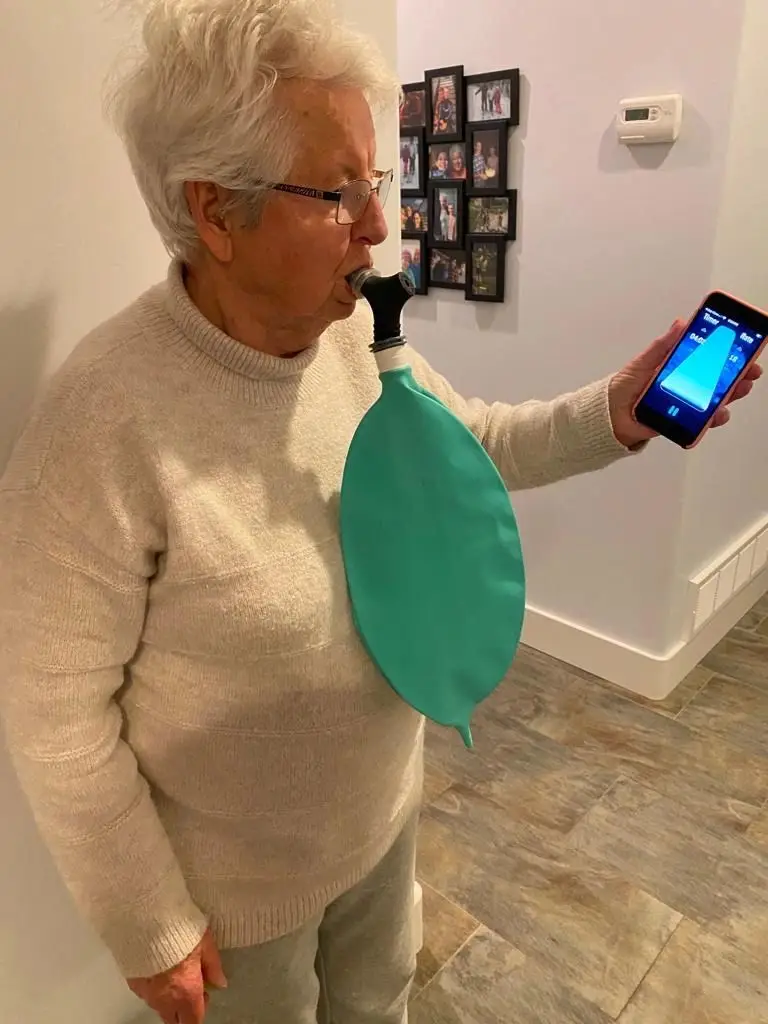by: Dr. Andrew Sellars

What if there were an scientifically verified training technique that not only enhances your fitness but also holds the potential to extend your lifespan? When you make training with your Isocapnic respiratory trainer part of your routine, you are improving your fitness as well as your longevity. By improving your Peak Ventilation, this innovative approach not only boosts overall health and athletic performance but also plays a crucial role in reducing the risks of cardiovascular disease and even cancer. Recent research has shed light on the profound impact that respiratory dynamics can have on mortality, suggesting that mastering the art of optimal breathing might be the key to a longer, healthier life.
In 2021, an article published in Medicine & Science in Sports & Exercise revealed that “Peak Ventilation has significant prognostic value for all-cause mortality.” The study found an inverse relationship between the amount of air a healthy person could exchange at maximal effort and their risk of dying from cardiovascular disease and even cancer.
This study highlights the importance of not only testing ventilation using standard metabolic carts but also underscores our previous assertions that VO2 max alone is just one small piece of the valuable information obtainable through metabolic testing. For many years, the data collected through graded exercise tests were summed up in a simple and singular metric, while the vast majority of the respiratory data were completely ignored. This study has confirmed the value of including Peak Ventilation in discussions and reporting, identifying it clearly as a diagnostic feature of health.
For Isocapnic BWB users, this study provides an interesting starting point to examine the effects of specific respiratory training interventions on improving Peak Ventilation. This value can be affected in several ways:
1. Increasing Tidal Volumes: This can be achieved through specific spine and rib mobilization techniques and improved muscular coordination exercises.
2. Improving Coordination to Achieve Higher Breath Rates: Higher breathing frequency is beneficial only if it is combined with maintaining tidal volumes, which requires focused training achievable with BWB.
It may not be surprising that there is a clear link between respiratory dynamics and cardiovascular disease, given the close relationship between blood flow and respiration that we have discussed in previous posts. The dynamics of inspiration drive an increase in venous return to the heart, and the shifting metabolic picture with increasing CO2 values leads to improvements in cardiac output and oxygen delivery. For all these reasons, the observation of the link between death from cardiovascular disease and maximal ventilation should be predictable.
However, we were surprised to find that this singular value at maximum intensity also correlates inversely with the risk of death from cancer. Whether this reflects the overall health required to reach higher levels of ventilation, or whether limitations of the respiratory system correspond to unhealthy habits that lead to a higher risk of cancer, is unknown from this study alone.
We look forward to future work examining the link between a focused training program to improve ventilation and its effects on longevity and the reduction of mortality rates.
written by Dr. Andrew Sellars




